| Company |
Symbol |
Market Cap (USD) |
Dividend Yield (%) |
Sector |
| Apple Inc. |
AAPL |
$2.7 Trillion |
0.55 |
Technology |
| Microsoft Corp. |
MSFT |
$2.4 Trillion |
0.80 |
Technology |
| Johnson & Johnson |
JNJ |
$370 Billion |
3.40 |
Healthcare |
| Procter & Gamble |
PG |
$360 Billion |
2.50 |
Consumer Staples |
| Coca-Cola Co. |
KO |
$260 Billion |
3.10 |
Consumer Staples |
| ExxonMobil Corp. |
XOM |
$430 Billion |
3.50 |
Energy |
| Duke Energy Corp. |
DUK |
$70 Billion |
4.40 |
Utilities |
| Nestlé S.A. |
NSRGY |
$300 Billion |
2.60 |
Consumer Staples |
| Unilever PLC |
UL |
$130 Billion |
3.50 |
Consumer Staples |
| Toyota Motor Corp. |
TM |
$270 Billion |
2.80 |
Industrials |
Introduction
Large-cap stocks represent companies with substantial market capitalization, typically exceeding $10 billion, and are known for their financial strength, global reach, and consistent performance. These stocks often serve as anchors in diversified portfolios due to their stability and institutional appeal. In today’s economic climate, marked by rising interest rates and persistent inflation, investors face new challenges in preserving capital and generating returns. Understanding how large-cap stocks behave under these conditions is essential for making informed decisions. This article explores the impact of macroeconomic shifts on large-cap equities, examines sector-specific resilience, and offers strategies for navigating inflationary pressures while maintaining long-term portfolio health.
Macroeconomic Backdrop: Interest Rates and Inflation
Rising interest rates and inflation are shaped by a mix of economic forces, including consumer demand, supply chain disruptions, and fiscal policy. Central banks, particularly the Federal Reserve, raise interest rates to curb inflation by slowing borrowing and spending. Inflationary pressures often stem from demand-pull factors, where consumer demand outpaces supply, or cost-push factors, such as rising production costs. Recent inflation spikes have been linked to pandemic-era stimulus, labor shortages, and global supply chain bottlenecks. According to the Federal Reserve Bank of St. Louis, inflation peaked at levels not seen since the early 1980s, prompting aggressive rate hikes to stabilize prices.
Historically, periods of high inflation and rising rates have reshaped consumer behavior and investment strategies. Consumers tend to reduce discretionary spending, while companies face margin pressure from higher input costs and borrowing expenses. Equity markets often experience volatility, with growth stocks underperforming due to their sensitivity to interest rates. Large-cap stocks, especially those in defensive sectors, tend to hold up better due to stable earnings and dividend payouts. Central banks respond by adjusting monetary policy, aiming to balance inflation control with economic growth. As noted by MSCI, structural trends like aging populations and deglobalization may keep inflation elevated, requiring investors to adapt their equity exposure accordingly.
Large-Cap Stocks: Core Characteristics
Large-cap stocks are defined by their substantial market capitalization, typically exceeding $10 billion. These companies span a wide range of sectors, including technology, healthcare, consumer staples, and financial services. Their size and scale often reflect a dominant market position, extensive global operations, and diversified revenue streams. This broad sector representation helps large-cap stocks provide stability and resilience, especially during periods of economic uncertainty. According to Morningstar, large-cap companies are often included in major indices like the S&P 500, making them a core component of institutional and retail portfolios.
Financial strength is a hallmark of large-cap stocks. These firms typically maintain strong balance sheets, consistent earnings, and high levels of institutional ownership. Their ability to generate reliable cash flow supports regular dividend payments and long-term growth. Companies like Microsoft, Johnson & Johnson, and Procter & Gamble exemplify this consistency, offering both income and capital appreciation. Dividend reliability is especially important for income investors, as it signals financial discipline and shareholder commitment. As noted by Investopedia, large-cap stocks are often favored for their lower volatility and predictable performance, making them a strategic choice in both bull and bear markets.
Performance of Large-Cap Stocks in High-Rate Environments
Large-cap stocks have historically demonstrated resilience during periods of rising interest rates and inflation. Their strong balance sheets, consistent earnings, and diversified operations help them weather economic headwinds more effectively than smaller or growth-oriented companies. During past rate hike cycles, such as those in the early 1980s and mid-2000s, large-cap stocks in defensive sectors like healthcare, consumer staples, and energy outperformed broader indices. These sectors tend to offer essential goods and services, making their revenues less sensitive to economic slowdowns. According to S&P Global, large-cap dividend payers have historically provided better downside protection and more stable returns during inflationary periods.
Compared to small-cap and growth stocks, large-cap equities are less vulnerable to interest rate shocks. Growth stocks, which rely heavily on future earnings, often see valuations compressed when rates rise. Small-cap firms may struggle with higher borrowing costs and limited pricing power. In contrast, large-cap leaders like Johnson & Johnson, Procter & Gamble, and ExxonMobil have consistently delivered shareholder value through dividends and operational efficiency. These companies benefit from scale, global reach, and pricing flexibility, allowing them to maintain margins even as input costs rise. As noted by Morningstar, investors seeking stability and income during inflationary cycles often turn to large-cap stocks for their proven track record and defensive positioning.
Dividend Strength and Inflation Protection
Dividend-paying stocks offer a powerful hedge against inflation, especially when payouts grow consistently over time. Unlike fixed income instruments, which may lose purchasing power as inflation rises, dividend stocks can increase distributions to keep pace with rising costs. This makes them attractive to investors seeking both income and long-term wealth preservation. Companies with strong free cash flow and disciplined capital allocation often prioritize dividend growth, helping shareholders maintain real returns. As noted by Dividend Strategist and AllianceBernstein, dividend stocks can outperform in inflationary environments when sourced from resilient sectors and managed with a long-term view.
Dividend aristocrats—companies that have increased their dividends for 25 consecutive years or more—are particularly valuable in inflationary cycles. Their track record reflects financial stability and a commitment to shareholder returns. These firms often operate in defensive sectors like consumer staples, healthcare, and industrials, which tend to perform well regardless of economic conditions. Reinvesting dividends can further enhance returns through compounding, especially when done consistently over time. This strategy allows investors to accumulate more shares and benefit from future dividend increases. According to Dividend.com and Zacks, dividend growth stocks not only provide income but also offer a buffer against inflation, making them a key component of any long-term investment strategy.
Valuation and Risk Considerations
In rising interest rate environments, valuation metrics like price-to-earnings (P/E) ratios and discounted cash flow (DCF) models become more sensitive, impacting investor sentiment and stock performance.
Higher interest rates increase the discount rate used in DCF models, which lowers the present value of future earnings. This disproportionately affects growth stocks, but large-cap stocks with stable cash flows and predictable earnings tend to be more resilient. P/E ratios often compress during rate hikes, as investors demand higher returns to offset inflation and borrowing costs. According to CFA Institute, small-cap stocks are traditionally viewed as more rate-sensitive, but data shows large-cap stocks also experience valuation pressure depending on sector and debt exposure.
Large-cap companies often manage risk through disciplined capital allocation and conservative debt strategies. Their access to low-cost financing and diversified revenue streams helps mitigate margin compression, even when input costs rise. Sectors like consumer staples and healthcare typically maintain pricing power, while tech and industrials may face growth slowdowns. As noted by BNY Newton Investment Management and T. Rowe Price, large-cap value stocks with strong earnings and modest valuations often outperform during periods of economic tightening. Investors should monitor debt-to-equity ratios, free cash flow trends, and sector-specific risks to assess how well large-cap stocks can navigate inflation and rate volatility.
Sector Rotation and Defensive Positioning
During inflationary periods, certain sectors tend to outperform due to their pricing power and essential nature. Utilities, energy, and consumer staples are historically considered defensive sectors, as they provide goods and services that remain in demand regardless of economic conditions. Large-cap stocks in these sectors—such as ExxonMobil in energy, Procter & Gamble in consumer staples, and Duke Energy in utilities—often deliver stable earnings and consistent dividends. Their ability to pass rising costs onto consumers helps preserve margins, making them attractive to investors seeking inflation protection. According to Morningstar, these sectors have shown relative strength during past inflationary cycles.
Avoiding overexposure to rate-sensitive sectors like technology and real estate is also key to managing portfolio risk. Tech stocks, which rely heavily on future earnings, often see valuations compressed when interest rates rise. Real estate investment trusts (REITs) may face pressure from higher borrowing costs and declining property values. A balanced portfolio should include a mix of defensive large-cap stocks and inflation-resilient assets. Strategies such as sector rotation—shifting exposure based on macro trends—and using dividend-focused ETFs can help maintain income and reduce volatility. For more on portfolio construction during inflationary periods, explore BlackRock and Fidelity.
Global Diversification and Currency Impacts
Multinational large-cap firms play a strategic role in hedging against inflation through geographic diversification and operational scale. By generating revenue across multiple regions, these companies can offset inflationary pressures in one market with stability in another. Many large-cap firms also use currency hedging tools—such as forward contracts and natural hedges—to manage exchange rate volatility. This helps preserve profit margins and maintain predictable cash flows. According to J.P. Morgan Asset Management, global diversification can reduce portfolio volatility and enhance long-term returns, especially during inflationary cycles.
Currency risk is a key consideration when investing in international large-cap dividend stocks. Fluctuations in exchange rates can impact the value of dividends and total returns for U.S.-based investors. However, foreign large-cap stocks—particularly those in developed markets like Europe and Japan—offer attractive dividend yields and sector diversification. Companies such as Nestlé, Unilever, and Toyota provide exposure to global consumer demand and stable payout histories. Investors can access these opportunities through ETFs and mutual funds focused on international dividend strategies. Funds like the Vanguard International High Dividend Yield ETF and the iShares International Select Dividend ETF offer diversified exposure to foreign large-cap dividend payers. For more insights, explore Morningstar and BlackRock.
Investor Sentiment and Behavioral Trends
Investor sentiment plays a pivotal role in shaping market dynamics during inflationary periods. Retail investors often respond to rising prices and interest rates by shifting toward perceived safe havens, such as dividend-paying large-cap stocks. These companies offer stability, predictable income, and lower volatility—qualities that become more attractive when uncertainty rises. Institutional investors, including pension funds and asset managers, also tend to increase allocations to large-cap equities during inflationary cycles, favoring firms with strong balance sheets and pricing power. According to BlackRock, this flight to quality reflects a broader preference for assets that can preserve capital and deliver consistent returns.
The rise of passive investing has further amplified large-cap dominance. Index funds and ETFs, particularly those tracking the S&P 500, automatically allocate capital to the largest companies by market cap. This structural flow reinforces demand for large-cap stocks, especially during volatile periods when investors seek broad market exposure with lower fees. Media narratives also influence behavior, often highlighting inflation fears or central bank actions, which can trigger herd-like responses. Market psychology—driven by headlines, sentiment indicators, and social media—can accelerate rotations into or out of sectors, even when fundamentals remain unchanged. As noted by Morningstar, understanding these behavioral trends is essential for navigating market cycles and maintaining a disciplined investment strategy.
Strategic Allocation in a Rising Rate Environment
Strategic allocation of large-cap stocks becomes especially important in a rising interest rate environment, where volatility and inflation can erode returns. Tactical positioning involves short-term adjustments based on macroeconomic signals, such as rotating into defensive sectors or dividend-paying stocks. Strategic positioning, on the other hand, focuses on long-term portfolio construction, emphasizing stability, income generation, and capital preservation. Large-cap stocks are well-suited for both approaches due to their consistent earnings, strong balance sheets, and sector diversity. According to Vanguard, blending tactical flexibility with strategic discipline can help investors navigate rate-driven market shifts while staying aligned with long-term goals.
In retirement portfolios and income strategies, large-cap stocks play a foundational role. Their dividend reliability and lower volatility make them ideal for generating cash flow without excessive risk. Balancing growth, income, and preservation requires careful sector selection and periodic rebalancing. Investors can use tools like dividend tracking apps, portfolio analytics platforms, and ETF screeners to monitor performance and adjust exposure. Resources such as Morningstar and Fidelity offer insights into asset allocation models and risk management techniques tailored for inflationary conditions. By combining strategic foresight with tactical agility, investors can maintain resilience and optimize returns in a challenging rate environment.
Conclusion
Large-cap stocks continue to serve as a strategic anchor for investors navigating rising interest rates and inflation. Their financial strength, dividend reliability, and sector diversity offer resilience in volatile markets, while their global reach and institutional backing provide stability and long-term growth potential. By understanding macroeconomic impacts, sector rotations, valuation dynamics, and behavioral trends, investors can position large-cap equities to balance income, preservation, and opportunity. Whether through tactical adjustments or strategic allocation, large-cap dividend stocks remain a vital tool for building inflation-resistant portfolios and sustaining performance across economic cycles.
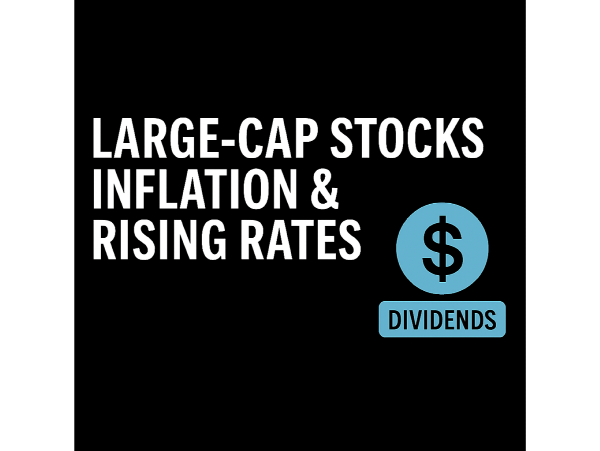

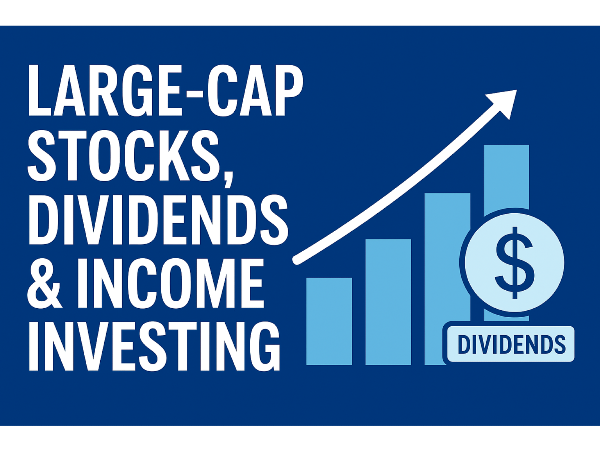
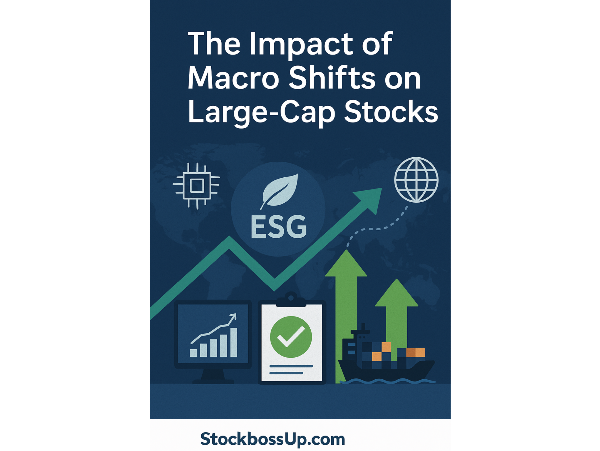
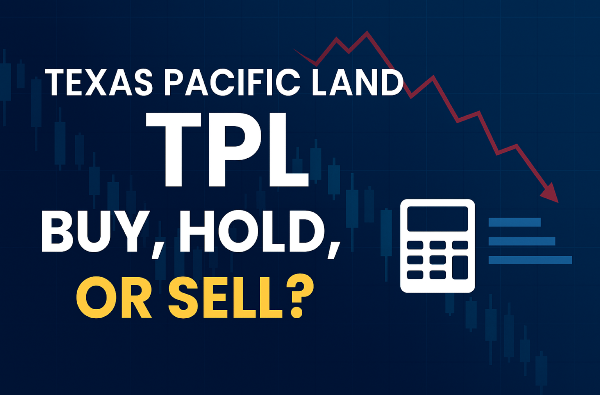

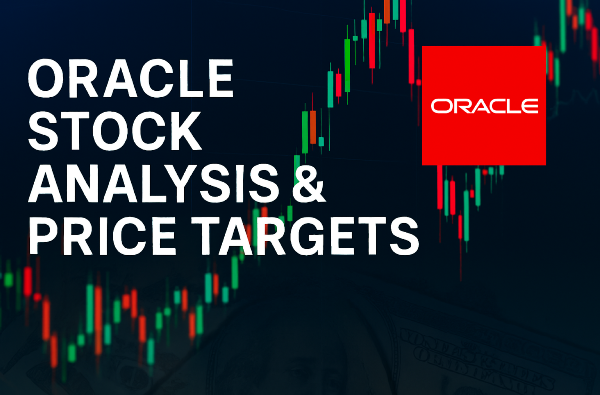





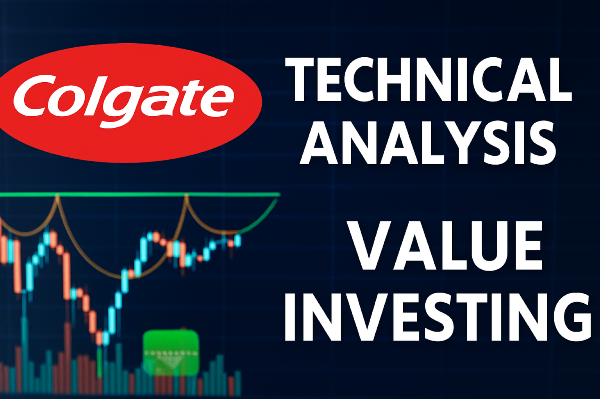




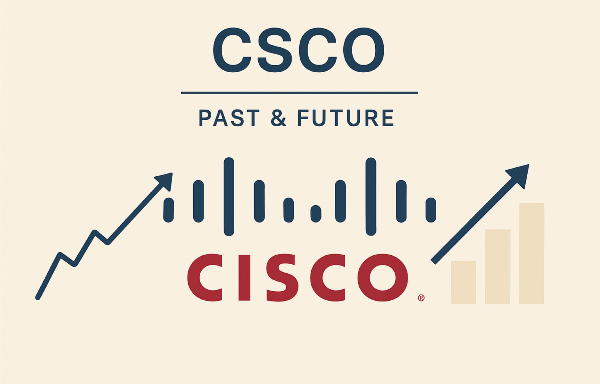
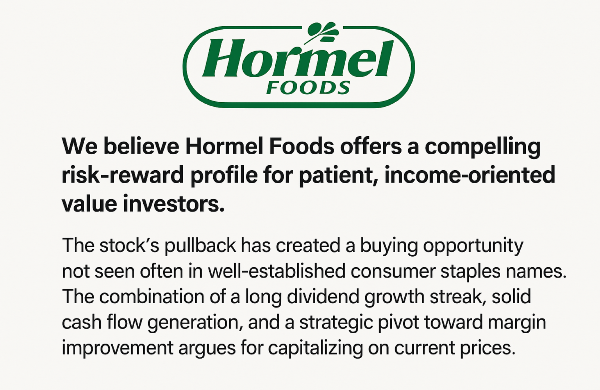











Introduction
Large-cap stocks represent companies with substantial market capitalization, typically exceeding $10 billion, and are known for their financial strength, global reach, and consistent performance. These stocks often serve as anchors in diversified portfolios due to their stability and institutional appeal. In today’s economic climate, marked by rising interest rates and persistent inflation, investors face new challenges in preserving capital and generating returns. Understanding how large-cap stocks behave under these conditions is essential for making informed decisions. This article explores the impact of macroeconomic shifts on large-cap equities, examines sector-specific resilience, and offers strategies for navigating inflationary pressures while maintaining long-term portfolio health.
Macroeconomic Backdrop: Interest Rates and Inflation
Rising interest rates and inflation are shaped by a mix of economic forces, including consumer demand, supply chain disruptions, and fiscal policy. Central banks, particularly the Federal Reserve, raise interest rates to curb inflation by slowing borrowing and spending. Inflationary pressures often stem from demand-pull factors, where consumer demand outpaces supply, or cost-push factors, such as rising production costs. Recent inflation spikes have been linked to pandemic-era stimulus, labor shortages, and global supply chain bottlenecks. According to the Federal Reserve Bank of St. Louis, inflation peaked at levels not seen since the early 1980s, prompting aggressive rate hikes to stabilize prices.
Historically, periods of high inflation and rising rates have reshaped consumer behavior and investment strategies. Consumers tend to reduce discretionary spending, while companies face margin pressure from higher input costs and borrowing expenses. Equity markets often experience volatility, with growth stocks underperforming due to their sensitivity to interest rates. Large-cap stocks, especially those in defensive sectors, tend to hold up better due to stable earnings and dividend payouts. Central banks respond by adjusting monetary policy, aiming to balance inflation control with economic growth. As noted by MSCI, structural trends like aging populations and deglobalization may keep inflation elevated, requiring investors to adapt their equity exposure accordingly.
Large-Cap Stocks: Core Characteristics
Large-cap stocks are defined by their substantial market capitalization, typically exceeding $10 billion. These companies span a wide range of sectors, including technology, healthcare, consumer staples, and financial services. Their size and scale often reflect a dominant market position, extensive global operations, and diversified revenue streams. This broad sector representation helps large-cap stocks provide stability and resilience, especially during periods of economic uncertainty. According to Morningstar, large-cap companies are often included in major indices like the S&P 500, making them a core component of institutional and retail portfolios.
Financial strength is a hallmark of large-cap stocks. These firms typically maintain strong balance sheets, consistent earnings, and high levels of institutional ownership. Their ability to generate reliable cash flow supports regular dividend payments and long-term growth. Companies like Microsoft, Johnson & Johnson, and Procter & Gamble exemplify this consistency, offering both income and capital appreciation. Dividend reliability is especially important for income investors, as it signals financial discipline and shareholder commitment. As noted by Investopedia, large-cap stocks are often favored for their lower volatility and predictable performance, making them a strategic choice in both bull and bear markets.
Performance of Large-Cap Stocks in High-Rate Environments
Large-cap stocks have historically demonstrated resilience during periods of rising interest rates and inflation. Their strong balance sheets, consistent earnings, and diversified operations help them weather economic headwinds more effectively than smaller or growth-oriented companies. During past rate hike cycles, such as those in the early 1980s and mid-2000s, large-cap stocks in defensive sectors like healthcare, consumer staples, and energy outperformed broader indices. These sectors tend to offer essential goods and services, making their revenues less sensitive to economic slowdowns. According to S&P Global, large-cap dividend payers have historically provided better downside protection and more stable returns during inflationary periods.
Compared to small-cap and growth stocks, large-cap equities are less vulnerable to interest rate shocks. Growth stocks, which rely heavily on future earnings, often see valuations compressed when rates rise. Small-cap firms may struggle with higher borrowing costs and limited pricing power. In contrast, large-cap leaders like Johnson & Johnson, Procter & Gamble, and ExxonMobil have consistently delivered shareholder value through dividends and operational efficiency. These companies benefit from scale, global reach, and pricing flexibility, allowing them to maintain margins even as input costs rise. As noted by Morningstar, investors seeking stability and income during inflationary cycles often turn to large-cap stocks for their proven track record and defensive positioning.
Dividend Strength and Inflation Protection
Dividend-paying stocks offer a powerful hedge against inflation, especially when payouts grow consistently over time. Unlike fixed income instruments, which may lose purchasing power as inflation rises, dividend stocks can increase distributions to keep pace with rising costs. This makes them attractive to investors seeking both income and long-term wealth preservation. Companies with strong free cash flow and disciplined capital allocation often prioritize dividend growth, helping shareholders maintain real returns. As noted by Dividend Strategist and AllianceBernstein, dividend stocks can outperform in inflationary environments when sourced from resilient sectors and managed with a long-term view.
Dividend aristocrats—companies that have increased their dividends for 25 consecutive years or more—are particularly valuable in inflationary cycles. Their track record reflects financial stability and a commitment to shareholder returns. These firms often operate in defensive sectors like consumer staples, healthcare, and industrials, which tend to perform well regardless of economic conditions. Reinvesting dividends can further enhance returns through compounding, especially when done consistently over time. This strategy allows investors to accumulate more shares and benefit from future dividend increases. According to Dividend.com and Zacks, dividend growth stocks not only provide income but also offer a buffer against inflation, making them a key component of any long-term investment strategy.
Valuation and Risk Considerations
In rising interest rate environments, valuation metrics like price-to-earnings (P/E) ratios and discounted cash flow (DCF) models become more sensitive, impacting investor sentiment and stock performance. Higher interest rates increase the discount rate used in DCF models, which lowers the present value of future earnings. This disproportionately affects growth stocks, but large-cap stocks with stable cash flows and predictable earnings tend to be more resilient. P/E ratios often compress during rate hikes, as investors demand higher returns to offset inflation and borrowing costs. According to CFA Institute, small-cap stocks are traditionally viewed as more rate-sensitive, but data shows large-cap stocks also experience valuation pressure depending on sector and debt exposure.
Large-cap companies often manage risk through disciplined capital allocation and conservative debt strategies. Their access to low-cost financing and diversified revenue streams helps mitigate margin compression, even when input costs rise. Sectors like consumer staples and healthcare typically maintain pricing power, while tech and industrials may face growth slowdowns. As noted by BNY Newton Investment Management and T. Rowe Price, large-cap value stocks with strong earnings and modest valuations often outperform during periods of economic tightening. Investors should monitor debt-to-equity ratios, free cash flow trends, and sector-specific risks to assess how well large-cap stocks can navigate inflation and rate volatility.
Sector Rotation and Defensive Positioning
During inflationary periods, certain sectors tend to outperform due to their pricing power and essential nature. Utilities, energy, and consumer staples are historically considered defensive sectors, as they provide goods and services that remain in demand regardless of economic conditions. Large-cap stocks in these sectors—such as ExxonMobil in energy, Procter & Gamble in consumer staples, and Duke Energy in utilities—often deliver stable earnings and consistent dividends. Their ability to pass rising costs onto consumers helps preserve margins, making them attractive to investors seeking inflation protection. According to Morningstar, these sectors have shown relative strength during past inflationary cycles.
Avoiding overexposure to rate-sensitive sectors like technology and real estate is also key to managing portfolio risk. Tech stocks, which rely heavily on future earnings, often see valuations compressed when interest rates rise. Real estate investment trusts (REITs) may face pressure from higher borrowing costs and declining property values. A balanced portfolio should include a mix of defensive large-cap stocks and inflation-resilient assets. Strategies such as sector rotation—shifting exposure based on macro trends—and using dividend-focused ETFs can help maintain income and reduce volatility. For more on portfolio construction during inflationary periods, explore BlackRock and Fidelity.
Global Diversification and Currency Impacts
Multinational large-cap firms play a strategic role in hedging against inflation through geographic diversification and operational scale. By generating revenue across multiple regions, these companies can offset inflationary pressures in one market with stability in another. Many large-cap firms also use currency hedging tools—such as forward contracts and natural hedges—to manage exchange rate volatility. This helps preserve profit margins and maintain predictable cash flows. According to J.P. Morgan Asset Management, global diversification can reduce portfolio volatility and enhance long-term returns, especially during inflationary cycles.
Currency risk is a key consideration when investing in international large-cap dividend stocks. Fluctuations in exchange rates can impact the value of dividends and total returns for U.S.-based investors. However, foreign large-cap stocks—particularly those in developed markets like Europe and Japan—offer attractive dividend yields and sector diversification. Companies such as Nestlé, Unilever, and Toyota provide exposure to global consumer demand and stable payout histories. Investors can access these opportunities through ETFs and mutual funds focused on international dividend strategies. Funds like the Vanguard International High Dividend Yield ETF and the iShares International Select Dividend ETF offer diversified exposure to foreign large-cap dividend payers. For more insights, explore Morningstar and BlackRock.
Investor Sentiment and Behavioral Trends
Investor sentiment plays a pivotal role in shaping market dynamics during inflationary periods. Retail investors often respond to rising prices and interest rates by shifting toward perceived safe havens, such as dividend-paying large-cap stocks. These companies offer stability, predictable income, and lower volatility—qualities that become more attractive when uncertainty rises. Institutional investors, including pension funds and asset managers, also tend to increase allocations to large-cap equities during inflationary cycles, favoring firms with strong balance sheets and pricing power. According to BlackRock, this flight to quality reflects a broader preference for assets that can preserve capital and deliver consistent returns.
The rise of passive investing has further amplified large-cap dominance. Index funds and ETFs, particularly those tracking the S&P 500, automatically allocate capital to the largest companies by market cap. This structural flow reinforces demand for large-cap stocks, especially during volatile periods when investors seek broad market exposure with lower fees. Media narratives also influence behavior, often highlighting inflation fears or central bank actions, which can trigger herd-like responses. Market psychology—driven by headlines, sentiment indicators, and social media—can accelerate rotations into or out of sectors, even when fundamentals remain unchanged. As noted by Morningstar, understanding these behavioral trends is essential for navigating market cycles and maintaining a disciplined investment strategy.
Strategic Allocation in a Rising Rate Environment
Strategic allocation of large-cap stocks becomes especially important in a rising interest rate environment, where volatility and inflation can erode returns. Tactical positioning involves short-term adjustments based on macroeconomic signals, such as rotating into defensive sectors or dividend-paying stocks. Strategic positioning, on the other hand, focuses on long-term portfolio construction, emphasizing stability, income generation, and capital preservation. Large-cap stocks are well-suited for both approaches due to their consistent earnings, strong balance sheets, and sector diversity. According to Vanguard, blending tactical flexibility with strategic discipline can help investors navigate rate-driven market shifts while staying aligned with long-term goals.
In retirement portfolios and income strategies, large-cap stocks play a foundational role. Their dividend reliability and lower volatility make them ideal for generating cash flow without excessive risk. Balancing growth, income, and preservation requires careful sector selection and periodic rebalancing. Investors can use tools like dividend tracking apps, portfolio analytics platforms, and ETF screeners to monitor performance and adjust exposure. Resources such as Morningstar and Fidelity offer insights into asset allocation models and risk management techniques tailored for inflationary conditions. By combining strategic foresight with tactical agility, investors can maintain resilience and optimize returns in a challenging rate environment.
Conclusion
Large-cap stocks continue to serve as a strategic anchor for investors navigating rising interest rates and inflation. Their financial strength, dividend reliability, and sector diversity offer resilience in volatile markets, while their global reach and institutional backing provide stability and long-term growth potential. By understanding macroeconomic impacts, sector rotations, valuation dynamics, and behavioral trends, investors can position large-cap equities to balance income, preservation, and opportunity. Whether through tactical adjustments or strategic allocation, large-cap dividend stocks remain a vital tool for building inflation-resistant portfolios and sustaining performance across economic cycles.